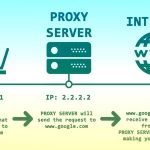WordPress is an open-source and free Content Management System in the hypertext preprocessor language. WordPress can be paired with the MariaDB database or MySQL along with HTTPS.
WordPress is equipped with a massive feature that includes the plugin architecture, template system, and many more. Based on a recent report, there are more than 50,000 plugins developed for the Content Management System.
WordPress powered more than 39.1% of the website in 2020. In 2023, wordpress development acquired the largest market share of about 63.5%. There are more than 455 million websites that will be using WordPress as of 2023. There are 1.13 billion websites on the web.
Table of Contents
WordPress Plugin Development:
WordPress plugins provide the best way to easily enhance the functionality of the website. WordPress plugins are a perfect way to easily extend the features of the site even beyond the data in the core WordPress platform. These plugins do not require editing the code required for adding a feature to the website.
WordPress Plugin Directory has more than thousands of plugins. Normally, the plugin consists of various functions and files written in PHP as it is a scripting language of WordPress.
Most of the files contain 4 essential elements like:
- Actions
- Shortcodes
- Filters
- Widgets
Why Develop A WordPress Plugin?
Many businesses started to create their own plugin as it is easier to add unique functionality to respective sites. Plugins act as the best building block for the WordPress site. These are convenient options for bringing important functions to the website.
WordPress Plugin is the perfect option for various functions such as:
- Adding contact forms
- Increasing the site speed
- Improving SEO
- Creating an online store
- Creating email opt-ins
- Extends Functionalities
- Backlinks Creation
- Seamless Communication
- Built-in Blogs
WordPress Plugins are the perfect option for adding more functionality to your website. These also allow the developers to customize the website content and even the web browsers. Browser plug-ins provide users with a better ability to add multimedia files in the internet browser.
Plugin development is also quite an easier option to learn. These would enable more flexibility along with cost-effectiveness. Hiring a dedicated developer lets you easily make custom additions to your site. It is the best way to add more features to the website for improved web traffic.
How Do WordPress Plugins Work?
For developing a WordPress Plugin, it is quite important to understand the key systems involved in it. These Plugins will be operated with the hooks as it involves the codes for interacting with others. Normally, WordPress is equipped with two types of hooks caller as the actions and filters.
-
Hooks:
WordPress Hooks are the codes that allow the program to interact easily with other parts of WordPress. There is no need to edit the core files. The Hooks lets the developers easily execute the code function in all aspects of the website. WordPress hooks can be classified into two formats as.
-
Action Hooks:
WordPress action is especially involved with the specific activity about to happen within a particular time. These actions involve adding or changing the functionality of the Plugin. Each function will be attached to an action so they are executed with an action.
WordPress core comes with predefined actions, but you can also easily create a new action hook. You’ll use do action for setting values in the hooked function. Normally, the add_action function is a perfect option for connecting different functions in a specific action.
-
Filter Hooks:
WordPress filters involve hooks accepting single variables or even a series of variables. Filter hooks let you add a new process to WordPress. Filters let you easily change the content on the website.
Filter hooks let you easily modify the process to manipulate or change data even without editing the source. These methods are well efficient in retrieving as well as modifying the data even before saving it on the database.
Filter hooks in WordPress are specially created with the apply_filters function. These could be well defined in the functions and require $tag as well as $value arguments.
WordPress Plugin developers can easily create their own filter with the apply_filters hook. It is the perfect option for executing the add_filter function. The method lets you easily hook specific functions on the filter.
-
Shortcodes:
Normally, the Shortcodes involve bits of code, so these would give the user an easy and quick way to create functionality. These are perfect options for site visitors. The Shortcodes in the WordPress Plugin can be easily placed on the pages and posts.
These are enabled with the Editors, Widgets, Menus, and many others. WordPress plugins especially use shortcodes for various aspects. It is quite an easier option for creating the shortcode with the add_shortcode function. The name of the shortcode could also be enabled with the various aspects.
-
Widgets:
Widgets are one of the best ways to easily enable the plugin functionality. These WordPress widgets require only a simple interface and give added benefits even without any hassle. It is convenient to create the widget by extending the WP Widget class.
What Are The Components Of A WordPress Plugin?
WordPress Plugin especially has a few different components. WordPress uses an object-oriented design approach for adding functionality. These can be used based on the complexity of the plugin, so these will be valuable for the WordPress Plugin. Some of the important elements of the plugin are.
- Main plugin folder – Helps to organize file(s) of the plugin
- Main plugin file (.php) with a header – Contains plugin information with the plugin’s code
There are also additional elements required for certain plugins, such as
- Subfolders – helps to organize plugin files and assets
- Stylesheets – helps to enqueue CSS
- Scripts – helps to enqueue JavaScript
- readme.txt – essential to submit your plugin to WordPress.org
Steps For WordPress Plugin Development:
Using the Components or elements in the WordPress Plugin lets the developer easily create the Plugin. You’ll first require to set up a testing environment for adding the new plugin to the website. It also lets you easily experiment safely even without spending more time.
Below are the steps for WordPress web development:
Step 1: Plugin Name
The most important step for WordPress plugin development has the official name for the Plugin. It is important to choose a relevant and unique name for the WordPress Plugin. You can extensively check WordPress Plugin Directory as well as make Google searches. This lets you choose the unique name for the plugin. The official plugin name will be used in the plugin’s folder as well as the PHP file.
Step 2: Add Plugin Folder And PHP File
Your WordPress Plugin requires you to store the data in a file. So you need to create the folder for WordPress Plugin.
- Open the WordPress installation file
- Head to the wp-content/plugins folder
- Create new folder
- Name folder using your plugin’s name
- Use hyphens to separate words
- Create a PHP file inside it
- Use the same naming convention
WordPress stores plugins inside the folder as default. Normally, all the plugin’s files are well contained in the folder of the directory. The complexity of this folder depends on the complexity plugin.
You can use a single PHP file for the simple plugin. The functionality of the plugin will be available in the wp-content/plugins/hello-dolly/plugin-file.php.
Step 3: Add A File Header
Upon creating the main plugin file, it is quite important to add the File header. It is normally a PHP block comment with the metadata of the plugin. You need to add the following code inside the file
/**
* Plugin Name: Your Plugin Name
* Plugin URI: http://yourdomain.com
* Description: Insert a brief description of what your plugin does here.
* Version: 1.0.0
* Author: Your Name
* Author URI: http://yourdomain.com
* License: GPL2
*/
You can replace the information with others for customized new plugins. Make sure to add a header when you have multiple PHP files in the plugin directory. The header contains the plugin’s name at the minimum. You can also use space for including the license, author details, and many others.
Step 4: Program Plugin
Upon setting the basic framework for the plugin, it is important to program the functions. These use various elements to create the plugin. You can also set the files with CSS, images, JavaScript, and many more. These are an incredible option for organization purposes with adding compressed folders.
Step 5: Adding To Your Plugin Folder
Adding the PHP file to the WordPress plugins directory is a simple process. The complete plugin will be automatically added to the WordPress site.
You might also use the text or code editor when writing PHP files and plugin code. Upload the plugin to your WordPress site by converting them into .zip format. Compress the plugin folder when adding the codes in it.
Step 6: Activate Plugin On WordPress Site
Creating the first draft of your plugin is easier and lets you add more functionality. It is easier to upload the folder with the plugin’s directory. you can add it to your WordPress dashboard by simply accessing
- Click Plugins
- Add New
- Upload Plugin
- Choose File
- Navigate to the Plugins screen
- Click on the ‘Activate link.’
You’re ready to deploy it to WordPress when you are finished with the plugin. Install the plugin directly WordPress dashboard by adding a new folder and uploading the ZIP file. The plugin shows up in the regular plugin list
Skills Required For WordPress Plugin Development:
You do not need to be well-versed in WordPress plugin development. You’ll need coding knowledge to create the plugin successfully. WordPress plugins will be written in PHP.
You need to have a basic understanding of PHP, HTML, and CSS. JavaScript is also essential for working in a block-based approach in WordPress 5.0.
Wrapping Up:
WordPress developers can easily create their own plugins to add better-customized functionality to the website. It is easier to create a custom plugin for the site and release it publicly. The above WordPress plugin development helps you to learn how to begin and walks you through the steps for the development phase.











